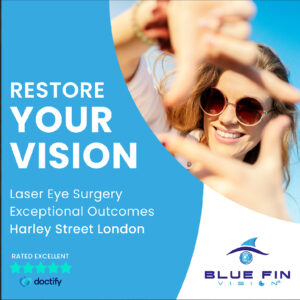My Blog
The world of online casinos continues to grow, offering players an ever-expanding range of options for gaming, bonuses, and secure transactions. 8KBET Casino has emerged as a notable contender in this crowded market, offering a wide array of casino games, enticing bonuses, and a seamless experience for players. Whether you’re a casual player looking for some fun or a high roller hoping to strike it big, 8KBET Casino aims to deliver an outstanding gaming experience for everyone.
In this article, we’ll explore the key features of 8KBET Casino, from its game selection to its customer support, payment methods, and security.
What is 8KBET Casino?
8KBET Casino is an online gambling platform that provides players with a comprehensive selection of games, including slots, table games, live dealer games, and more. It is designed to cater to players from all over the world, offering a user-friendly interface, secure payment options, and generous bonuses to keep the gaming experience exciting.
The casino focuses on delivering a high-quality experience with fair gaming, enhanced security, and customer support that is available around the clock. With a wide range of games, frequent promotions, and a smooth mobile experience, 8KBET has earned a solid reputation among online casino enthusiasts.
Game Selection at 8KBET Casino
The variety of games available is one of the main attractions at 8KBET Casino. Players can find a diverse selection of games, all provided by reputable software developers, ensuring high-quality gameplay and graphics.
Slots: Slots are the cornerstone of many online casinos, and 8KBET doesn’t disappoint. With a range of video slots, classic 3-reel games, and progressive jackpot slots, there’s something for every type of slot player. The games come from top-tier providers like Microgaming, NetEnt, and Playtech, ensuring both fun gameplay and the potential for significant payouts. Themes range from action-packed adventures to fantasy, mythology, and pop culture, ensuring there’s always something new to try.
Table Games: For players who prefer traditional casino games, 8KBET offers a wide array of options. Blackjack, roulette, baccarat, and poker are available in several variations, allowing players to find their preferred rules and betting limits. Whether you enjoy the strategy of blackjack or the excitement of roulette, these games are a staple at 8KBET Casino.
Live Casino: For the ultimate immersive experience, the live casino section offers real-time action with professional dealers. Games such as live blackjack, live roulette, and live baccarat are streamed with high-definition quality. Players can interact with the dealers and fellow players, creating a social and authentic atmosphere reminiscent of land-based casinos.
Specialty Games: Beyond traditional table games and slots, 8KBET offers specialty games like scratch cards, keno, and virtual sports. These games provide a refreshing change from the more conventional offerings and add variety to the casino’s catalog.
Bonuses and Promotions
8KBET Casino knows how to keep players engaged with its exciting bonus offerings. These bonuses not only reward new players but also keep regulars coming back for more. Here are some of the common promotions available:
Welcome Bonus: New players are greeted with a generous welcome package, which often includes a deposit match bonus and/or free spins on selected slots. This bonus is a great way to get started and maximize your initial bankroll.
Reload Bonuses: Existing players can benefit from reload bonuses, which are typically offered on subsequent deposits. These bonuses help to extend gameplay and offer additional value for your deposits.
Cashback Offers: 8KBET occasionally runs cashback promotions, where players can get back a percentage of their losses. This type of bonus provides a safety net for players who may experience a losing streak, giving them a chance to recover some of their funds.
VIP Program: For loyal players, 8KBET Casino offers a VIP program that rewards frequent play. VIP members receive personalized bonuses, exclusive promotions, and other perks that enhance the gaming experience.
Tournaments and Special Promotions: From time to time, 8KBET hosts slot tournaments, prize draws, and other special promotions. These events provide opportunities for players to compete for big prizes and enjoy a more dynamic casino experience.
Payment Methods
8KBET Casino offers a variety of safe and secure payment methods to facilitate easy deposits and withdrawals. The casino accepts the most common forms of payment, including:
Credit and Debit Cards: Visa, MasterCard, and other major card providers are accepted for both deposits and withdrawals, making it easy for players to manage their funds.
E-wallets: Players can use e-wallet services such as Neteller, Skrill, and PayPal for fast, secure transactions. E-wallets typically offer quicker withdrawal times compared to traditional banking methods.
Bank Transfers: For players who prefer using bank transfers, 8KBET offers this option, although it may take a few business days for funds to be processed.
Cryptocurrencies: In line with modern trends, 8KBET Casino also supports cryptocurrencies like Bitcoin, providing players with an additional layer of privacy and security for their transactions.
Withdrawals at 8KBET Casino are generally processed quickly, depending on the payment method. The platform also employs SSL encryption technology to ensure that all financial transactions are secure and protected from unauthorized access.
Mobile Gaming Experience
8KBET Casino offers a fully optimized mobile experience, 8KBET allowing players to enjoy their favorite games on smartphones and tablets. The mobile version of the casino is responsive, meaning the website adjusts seamlessly to different screen sizes. Whether you’re playing on Android or iOS devices, the mobile platform provides the same high-quality games and features available on the desktop version.
Players can enjoy slots, table games, and live dealer games on the go, without sacrificing the performance or quality of gameplay. Mobile gaming at 8KBET makes it easy to play whenever and wherever you choose, adding to the overall convenience of the casino experience.
Customer Support
Customer support is a crucial aspect of any online casino, and 8KBET Casino excels in this area. Players can reach the support team via multiple channels:
Live Chat: The live chat feature is available 24/7 and provides players with instant access to customer support agents. The team is responsive and able to assist with any issues or questions you may have.
Email Support: For more detailed inquiries or non-urgent matters, players can reach out to the support team via email. The team responds promptly and provides thorough assistance.
Phone Support: In certain regions, 8KBET offers phone support, providing an additional layer of personal assistance for players who prefer speaking directly with customer service.
Additionally, the casino has an extensive FAQ section, where players can find answers to common questions about games, promotions, and account management.
Security and Fair Play
8KBET Casino prioritizes player security by employing SSL encryption technology to safeguard sensitive information. All personal and financial data is protected, ensuring that players can enjoy a safe gaming environment.
.…

 Online gaming has become an integral part of modern entertainment, captivating millions of people worldwide. With the advancement of technology and the widespread availability of the internet, gaming has evolved from simple offline activities into complex and interactive virtual experiences that connect players from different corners of the globe. This transformation has not only changed how people play games but also how they socialize, compete, and even work.
Online gaming has become an integral part of modern entertainment, captivating millions of people worldwide. With the advancement of technology and the widespread availability of the internet, gaming has evolved from simple offline activities into complex and interactive virtual experiences that connect players from different corners of the globe. This transformation has not only changed how people play games but also how they socialize, compete, and even work. Games have been an integral part of human society since ancient times, serving as sources of entertainment, socialization, and even education. Over the centuries, games have evolved from simple pastimes to complex digital experiences that shape our culture and influence various aspects of our lives. In this article, we explore the evolution and impact of games, from their humble beginnings to their current status as a cultural phenomenon.
Games have been an integral part of human society since ancient times, serving as sources of entertainment, socialization, and even education. Over the centuries, games have evolved from simple pastimes to complex digital experiences that shape our culture and influence various aspects of our lives. In this article, we explore the evolution and impact of games, from their humble beginnings to their current status as a cultural phenomenon. Gaming, once considered a niche hobby, has rapidly evolved into a global phenomenon that permeates various aspects of society. From the early days of classic arcade games to the immersive experiences of modern video games, the industry has undergone significant transformations, both in terms of technology and cultural impact.
Gaming, once considered a niche hobby, has rapidly evolved into a global phenomenon that permeates various aspects of society. From the early days of classic arcade games to the immersive experiences of modern video games, the industry has undergone significant transformations, both in terms of technology and cultural impact. Online gaming has rapidly evolved from a niche hobby to a mainstream activity, attracting millions of players around the world. Over the years, it has become an integral part of modern entertainment, offering something for every type of gamer. With advancements in technology and internet speeds, online gaming has grown into a highly interactive, social, and immersive experience, connecting people globally and creating communities that transcend geographical boundaries.
Online gaming has rapidly evolved from a niche hobby to a mainstream activity, attracting millions of players around the world. Over the years, it has become an integral part of modern entertainment, offering something for every type of gamer. With advancements in technology and internet speeds, online gaming has grown into a highly interactive, social, and immersive experience, connecting people globally and creating communities that transcend geographical boundaries.


 Online gaming has undergone a remarkable renaissance, evolving from a niche hobby to a global cultural phenomenon that has reshaped the way people engage with entertainment and technology. This digital transformation has created a dynamic space where individuals connect, compete, and immerse themselves in a myriad of virtual experiences, transcending traditional boundaries.
Online gaming has undergone a remarkable renaissance, evolving from a niche hobby to a global cultural phenomenon that has reshaped the way people engage with entertainment and technology. This digital transformation has created a dynamic space where individuals connect, compete, and immerse themselves in a myriad of virtual experiences, transcending traditional boundaries.

